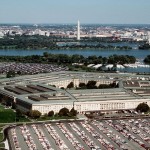by Jim Lobe
I know this is a little off-topic from our usual Middle East focus, but I wanted to point out a new resource for those of you interested in US security and military assistance to countries around the world. Unfortunately, a lot of that information is very difficult to find, and it’s rarely aggregated in a way that makes it possible for researchers or interested citizens to understand how much assistance is going to X country via how many different programs. The Pentagon, which has a lot of shopping-around money, has been particularly tardy in providing information about the many aid programs it runs and is required to report to Congress.
However, dogged researchers at the Center for International Policy (CIP), with the help of the Project on Middle East Democracy (POMED), the Washington Office on Latin America (WOLA), the Latin American Working Group (LAWG), and the Friends Committee on National Legislation (FCNL), have put together in one interactive website as much of the unclassified data as can be legally gathered. The site launched last month at the Open Society Institute (OSI), which also funded the initiative.
The project was born out of the Just the Facts project, which first documented US security assistance to Latin America and the Caribbean in the mid-1990s. The project became an invaluable resource for Congressional staffers worried about the imbalance between security and development assistance in the region. The Security Assistance Monitor project covers a broader geographical area and includes both State Department-funded, and, to the greatest extent possible, Pentagon-funded programs from 2000 to the present. Of course, given their classified nature it doesn’t include CIA or other intelligence programs.
“Over the past decade, the US government has greatly expanded its investment in security assistance and its involvement in the security sectors of other countries, but where are the dollars going; what is the effect on the security of the recipient; and is it buying us relationships that are big trouble downstream,” asked Gordon Adams, a former senior Clinton administration defence budget official who teaches at American University, in remarks prepared for the website launch.
“As we give more and more responsibility to the Pentagon, we don’t know the answers to these questions,” he said. “Accountability starts with transparency, the Security Assistance Monitor is a big step forward in filling that hole in our knowledge.”
The website, for example, doesn’t explain the effectiveness of US security assistance to Yemen, whose capital Sana’a essentially fell last month to the Houthi insurgency from North Yemen, virtually without a shot fired. The latest reporting indicates that the Yemeni armed forces, to the extent they remain coherent, are now under Houthi direction. But what you can, among other things, find out from the new site is that the ratio of equipment to training provided to Yemen under the Pentagon’s controversial 1206 program during fiscal 2013 was nearly 100:1. The Yemenis received $45.4 million dollars in weapons and related equipment versus $565,000 in training—a ratio that may help explain the Yemeni military’s rather poor performance.
You might also be interested to know that Uzbekistan, Central Asia’s most repressive state (which is saying something), received security assistance from 16 different Department of Defense and State Department programs between 2002 and 2013. Washington is currently supplying the government nearly 20 million dollars a year in military and police assistance.
In any event, if you are interested in this kind of data, you should check out the site.






Very interesting: $3.1 billion for Israel and $60.3 million for Palestine.
That helps to understand US priorities in the area, I am sure will all agree.
Other principal recipients are Egypt and Yemen (!!!).
More American weapons ending up in the hands of extremist terrorists.
Don’t worry: they’ll probably hand them on the ISIS.
Well now, considering the outflow, who receives what, it’s sort of clear that the Arms merchants here in the U.S. are the real recipients of those dollars. Time to stop this charade and if the Pentagon can’t live up to its duties, then a house sweeping needs to take place. If they don’t want to cooperate, then the Military officer[s] who head those departments should be fired with prejudice, up to losing their retirement benefits too. If drastic action isn’t taken, the outcome will be beyond the pale.
Figures of the amout of money payed out under various titles is of course important, BUT, MORE IMPORTANT is how these assistance were spent, who were the beneficiaries, who were the contractors, what was actually achieved ….
The amount of arms and ammunitions can be quentified though the quality cannot be and where they eventually ended up(international black markets), but , less controlable is services supposed to be bought and rendered. For example yemenis recieved $45.4 in weapons and $565.5 in training. Why an army with such an extensive and expensive training could not stop some tribes men relatively poorly armed andwith no formal training ? Why was such a big amount allocated to training an existing and trained army that failed exactly where it should prove its worth ? Who were the people who suggested this programme and who benefited from the training programme ? And …,
There is no doubt that these types of programs in Iraq,Afghanistan and elsewhere are far from clear and seriously questionable. Why is the US wasting the taxpayers money ? Is it a deliberate waste of taxpayers money so that certain people can pocket these them ? If so most certainly some individuals of high positions in the path of suggesting and approving to payment and delivery of the material and services are responsible and should be questioned , in a case like yeman, for example. There are several similar cases in assisting Iraq and Afghanistan. Do American authorities deliberately turn their face and allow such corruptions exist ? If so why ? Are the american authorities unable to control the path , quantity and qualities of such assistance? Are the institutions responsible for initiating and delivering these assistance corrupt and at the same time so powerful that no one can question or stop them ,and …..
Scrutiny in the USA needs overhauling and polishing.
Well MostafaviHassa, Pretty much what you asked with a ? is reality in the U.S. system. It’s as old as time. Profiteers, no matter which side of the fence they be. An example: sometime ago during the “Cold War”, someone who worked in the procurement field of the U.S. Military, discovered the taxpayers were paying $500.00 dollars for a simple hammer, which rose in price quickly to $5,000.00, probably more today. There was also a law that prosecuted any American business/man for bribery or corrupting overseas government[s]. That all went out the window in the 90’s, but especially after 9-11. Game on, as the say goes, and we can see the results of spending $Trillions since, with the American taxpayer stuck paying the bills. When the government is corrupted, I might add with the blessing of the Supreme Court, then the cancer spreads unabated until the patient is dead.